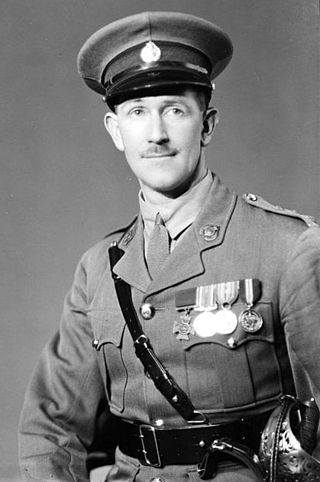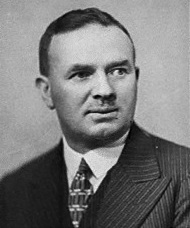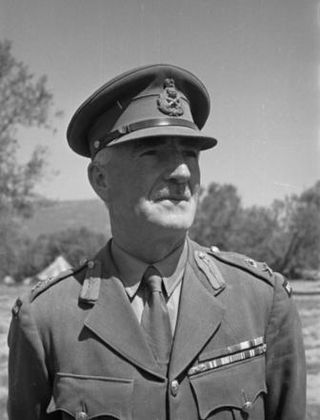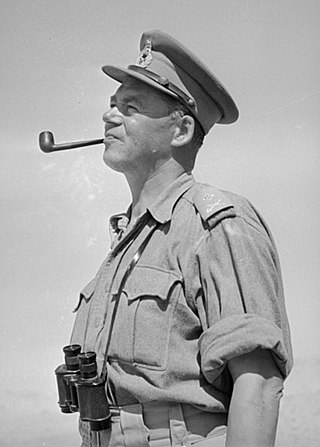
The Battle of Crete, codenamed Operation Mercury, was a major Axis airborne and amphibious operation during World War II to capture the island of Crete. It began on the morning of 20 May 1941, with multiple German airborne landings on Crete. Greek and other Allied forces, along with Cretan civilians, defended the island. After only one day of fighting, the Germans had suffered heavy casualties and the Allied troops were confident that they would defeat the invasion. The next day, through communication failures, Allied tactical hesitation, and German offensive operations, Maleme Airfield in western Crete fell, enabling the Germans to land reinforcements and overwhelm the defensive positions on the north of the island. Allied forces withdrew to the south coast. More than half were evacuated by the British Royal Navy and the remainder surrendered or joined the Cretan resistance. The defence of Crete evolved into a costly naval engagement; by the end of the campaign the Royal Navy's eastern Mediterranean strength had been reduced to only two battleships and three cruisers.

Brigadier Leslie Wilton Andrew, was a senior officer in the New Zealand Military Forces and a recipient of the Victoria Cross, the highest award of the British Commonwealth for gallantry "in the face of the enemy". He received the decoration for his actions during the Battle of Passchendaele in 1917.

The New Zealand Expeditionary Force (NZEF) was the title of the military forces sent from New Zealand to fight alongside other British Empire and Dominion troops during World War I (1914–1918) and World War II (1939–1945). Ultimately, the NZEF of World War I became known as the First New Zealand Expeditionary Force. The NZEF of World War II was known as the Second New Zealand Expeditionary Force (2NZEF).

Brigadier James Hargest, was an officer of the New Zealand Military Forces, serving in both the First and Second World Wars. He was a Member of New Zealand's Parliament from 1931 to 1944, representing firstly the Invercargill and then the Awarua electorates.
The 23rd Battalion, also known as the Canterbury-Otago Battalion, was an infantry battalion of the New Zealand Military Forces during the Second World War. Formed in November 1939 as part of the 5th Brigade, 2nd Division of the 2nd New Zealand Expeditionary Force. After undertaking training at Burnham Camp the battalion sailed from New Zealand on 1 May 1940. The battalion saw action in Greece, Crete, North Africa, and Italy.

Brigadier Reginald Miles, CBE, DSO & Bar, MC was a professional soldier who served in the New Zealand Military Forces during the First and Second World Wars.

Lieutenant General Sir Edward Puttick, was an officer who served with the New Zealand Military Forces during the First and Second World Wars. The first New Zealand-born soldier to reach the rank of lieutenant general, he was Chief of the General Staff of the New Zealand Military Forces from 1941 to 1945.

Colonel Neil Lloyd Macky MC was a New Zealand lawyer and military leader.

Major-General Lindsay Merritt Inglis, was a New Zealand military officer, lawyer and magistrate. Born in Mosgiel, he volunteered for service in the New Zealand Expeditionary Force during World War I. Inglis served on the Western Front and was awarded the Military Cross for his actions during the Battle of Flers-Courcelette. He ended the war as a company commander and returned to New Zealand in 1919.

Brigadier Frederick Melrose Horowhenua Hanson was a New Zealand soldier, engineer, military leader and public servant.
The 4th Infantry Brigade was a formation of the New Zealand Military Forces, active in both the First and Second World Wars. It was initially raised in England in 1917 for service with the New Zealand Division on the Western Front during the First World War. It only fought in one major engagement, the Battle of Broodseinde, although it was in reserve for two other significant battles, the Battle of Messines and the First Battle of Passchendaele. The brigade was disbanded in early 1918 due to a reorganisation of the New Zealand Division.
The 21st Battalion was an infantry battalion of the New Zealand Military Forces that served during the Second World War. Formed in January 1940, it was part of the 5th Brigade, 2nd New Zealand Division of the 2nd New Zealand Expeditionary Force. The battalion saw action in Greece, Crete, North Africa and Italy before it was disbanded in December 1945.

The 20th Battalion was a formation of the New Zealand Military Forces which served, initially as an infantry battalion and then as an armoured regiment, during the Second World War as part of the 2nd New Zealand Division.

The 6th Infantry Brigade was an infantry brigade of the New Zealand Military Forces, active during World War II as part of the 2nd New Zealand Division. It saw service during the North African Campaign and the Italian Campaign before being disbanded in late 1945.

The 19th Battalion was a formation of the New Zealand Military Forces which served, initially as an infantry battalion and then as an armoured regiment, during the Second World War as part of the 2nd New Zealand Division.

The 18th Battalion was a formation of the New Zealand Military Forces which served, initially as an infantry battalion and then as an armoured regiment, during the Second World War as part of the 2nd New Zealand Division.

The 25th Battalion was an infantry battalion of the New Zealand Military Forces, which served during the Second World War as part of the 6th Infantry Brigade, 2nd New Zealand Division.
The 26th Battalion was an infantry battalion of the New Zealand Military Forces, which served during the Second World War as part of the New Zealand 2nd Division. Raised in May 1940, it fought in the Battle of Greece, the North African Campaign and the Italian Campaign. It finished the war in Trieste and was disbanded in December 1945.

Brigadier George Herbert Clifton, was a senior officer in the New Zealand Military Forces and a three-time recipient of the Distinguished Service Order.

The German invasion of Greece on 6 April 1941, had already been anticipated by the Allied forces. So a defense line was created across the mountain passes near Mount Olympus consisting of British, Australian and New Zealand troops which would prevend the German forces from capturing Thessaly and thereby denying them the opportunity to advance into mainland Greece. However, the speed of the German invasion force had made sure that the endurance of the defending troops and the strength of their defences were very quickly going to be put to the test.
















